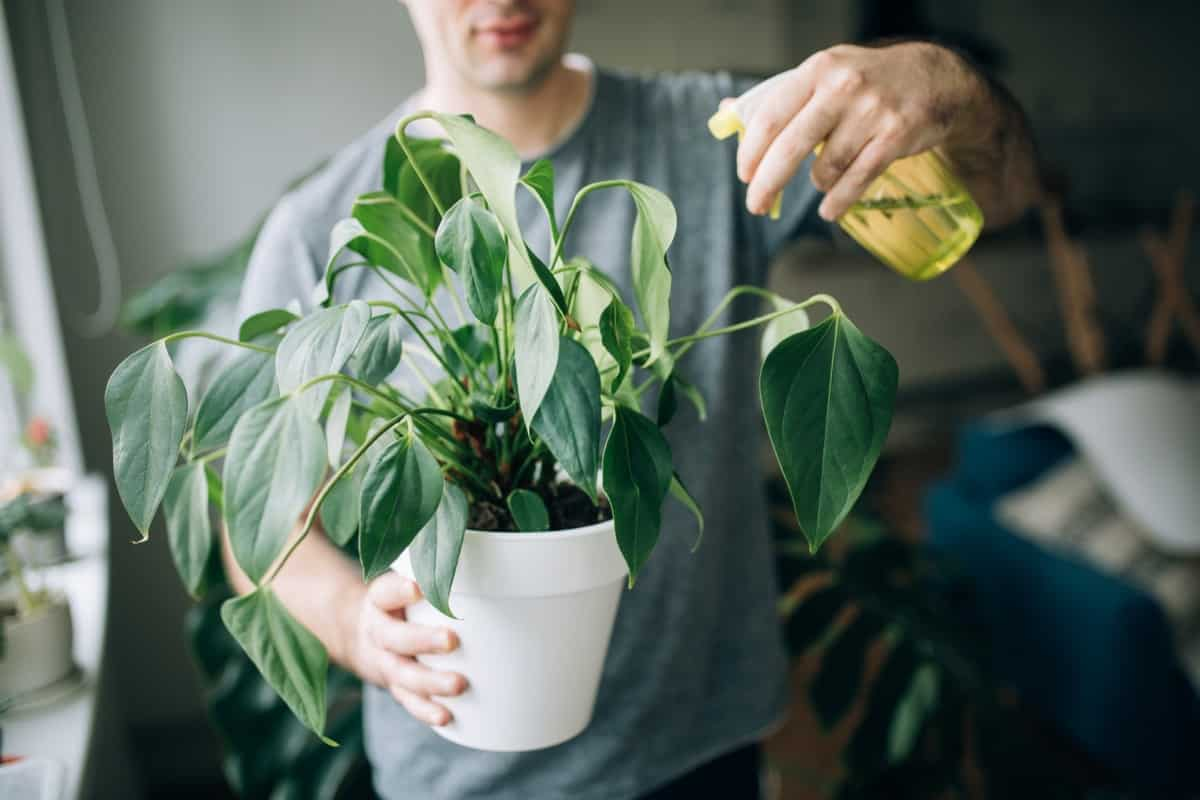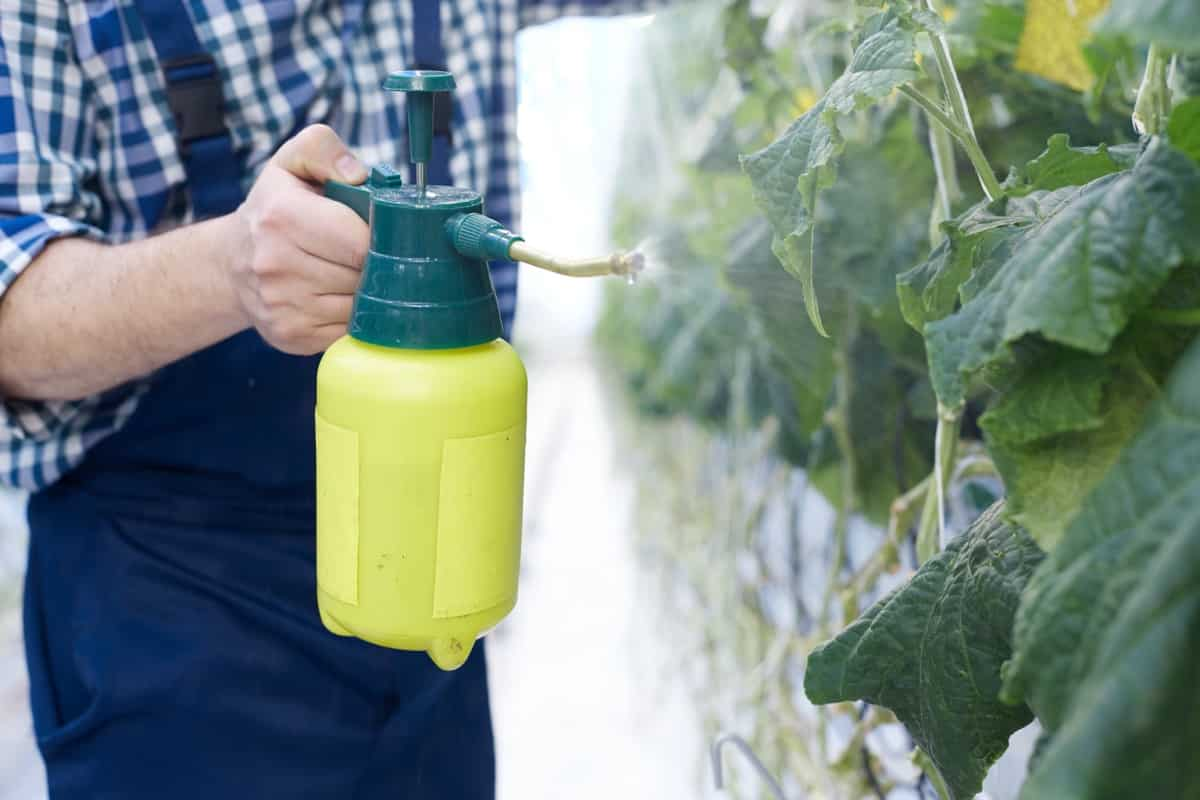Gardening enthusiasts and professional horticulturists continually search for the best methods to foster healthy plant growth. An increasingly popular technique is Foliar Sprays, which directly supply plants with vital nutrients and treatments. This article explores what Foliar Spray is, its numerous benefits, types, and uses, and delves into preparing homemade foliar sprays, including an NPK foliar spray and organic foliar spray alternatives.

We will learn about the best time to spray foliar fertilizer and discuss foliar spray uses that extend beyond basic plant nutrition to pest control and disease prevention. We will also consider precautions and safety measures that must be considered when using Foliar Sprays.
What is Foliar Spray?
Foliar Spray is a liquid-based solution applied directly to a plant’s leaves rather than its root system. This process allows for the immediate absorption of nutrients or other elements in the spray. Nutrients such as nitrogen, phosphorus, and potassium, commonly referred to as NPK, are examples of essential elements often included in foliar sprays.
Different types of foliar fertilizers are available, each with unique compositions to cater to diverse plant needs. Additionally, foliar sprays can be used for purposes such as pest control, with formulations created to fend off various plant pests.
Benefits of Foliar Sprays for Plants
The benefits of Foliar Sprays are numerous and significant. The primary advantage is the immediate absorption of nutrients. This immediate uptake can be especially beneficial during nutrient deficiencies or when plants are stressed. The foliar application provides an avenue for quick recovery.
It also allows for targeted treatment, addressing the needs of specific plants without affecting others in the vicinity. For instance, if only one plant exhibits signs of nutrient deficiency or pest infestation, it can be targeted without the need to treat the entire garden. This targeted approach is efficient and prevents unnecessary use of fertilizers or pesticides.
Types of Foliar Sprays for Plants
There are various types of Foliar Sprays, each with a specific purpose. Nutrient Sprays, such as an NPK foliar spray, are designed to directly provide plants with essential nutrients. Organic foliar sprays, on the other hand, are made with organic compounds and are free from synthetic chemicals, making them environmentally friendly. Pest Control Sprays are designed to keep pests at bay, ensuring your plants remain healthy and unharmed. Disease Control Sprays, usually containing fungicides or bactericides, help prevent and control plant diseases.
In case you missed it: Benefits of Neem Oil for Houseplants: Spray Recipe, How to Use, and Application

How to Make Homemade Foliar Sprays
Learning how to make foliar spray at home can be a rewarding experience. To prepare an NPK foliar spray, you’ll need a source of these three primary nutrients. An example could be compost tea, which is rich in nitrogen, phosphorous, and potassium. Consider a seaweed extract or a fish emulsion for an organic foliar spray. A homemade solution of neem oil, water, and mild soap often works well as a pest control spray. It’s crucial to thoroughly mix your chosen ingredients and strain the mixture to prevent clogging your spray bottle.
When to Apply Foliar Sprays
Identifying the best time to spray foliar fertilizer is crucial to its efficacy. Early morning or late evening is typically the best time to apply foliar sprays. These times offer cooler temperatures and calm weather, reducing the evaporation rate and allowing plants more time to absorb the nutrients. During these periods, the stomata, or tiny pores on the plant’s leaves, are more open, allowing maximum absorption.
Application Techniques for Foliar Sprays
Application techniques are also vital for the effective use of foliar sprays. It’s essential to evenly spray the solution on both the top and underside of leaves, as the stomata are often located on the leaf’s lower surface. Using a fine mist spray bottle can help achieve a uniform application. For larger gardens, a backpack sprayer may be more practical. Remember to shake the mixture periodically during application to keep the nutrients well-distributed in the solution.
Foliar Sprays for Nutrient Deficiencies
Foliar sprays are especially useful for addressing nutrient deficiencies in plants. A plant showing signs of nutrient deficiency, such as yellowing leaves or stunted growth, may benefit significantly from a nutrient-packed foliar spray. For example, an NPK foliar spray can supply the primary nutrients needed for photosynthesis and growth. These nutrients are absorbed quickly through foliar feeding, allowing the plant to recover and return to its healthy state.
Foliar Sprays for Pest Control
Foliar sprays can also be beneficial for pest control. Pests are a common threat to the health and vitality of garden plants. A foliar spray designed to deter or eliminate these pests can protect your plants without causing unnecessary environmental harm. An example could be a homemade solution containing neem oil, a natural pesticide known for its effectiveness against various pests.
In case you missed it: Homemade Garlic and Pepper Spray for Pests and Disease Control: Recipe for Organic Benefits of Plants

Compatibility of Foliar Sprays With Other Treatments
Foliar sprays are generally compatible with other treatments, making them versatile in plant care. For instance, foliar feeding can be used with soil fertilizers to provide a comprehensive nutrient boost. Similarly, foliar pest control sprays and other pest management strategies can be used. However, monitoring your plants closely when combining treatments is essential to avoid over-fertilization or potential chemical interactions.
Precautions and Safety Measures When Using Foliar Sprays
While foliar sprays offer numerous benefits, exercising certain precautions is crucial when using them. Remember to wear gloves and goggles while handling and using sprays for safety. When applying, ensure you don’t spray into the wind to avoid contact with your eyes or skin. Avoid over-application, which can lead to nutrient toxicity or damage the plant’s leaves. Also, ensure your spray equipment is clean to prevent the spread of disease. And finally, always store your foliar sprays out of the reach of children and pets for safety.
Understand Your Plant’s Needs
Recognizing and understanding your plant’s needs is crucial in effectively using Foliar Sprays. Regularly inspect your plants for signs of nutrient deficiencies, disease, or pest infestation. These signs include yellowing or wilting leaves, stunted growth, or visible pests. After spotting a problem, pick the right foliar spray to deal with it.
A nutrient-rich spray like an NPK foliar spray would be beneficial for nutrient deficiencies. For pest issues, a pest control spray would be appropriate. Likewise, for diseases, a disease control spray would be needed. Regular inspections and prompt identification of problems will allow for timely and effective intervention, helping maintain your garden plants’ health and vitality.
In case you missed it: Homemade Sage Spray for Pests and Disease Control: Recipe for Organic Benefits of Plants

Conclusion
Foliar Sprays offer a practical and efficient method for delivering nutrients and other beneficial plant treatments. They allow for quick absorption and targeted application and can address various issues, from nutrient deficiencies to pest control. You can utilize these sprays to maintain a healthy and thriving garden with some knowledge and care.
- Ultimate Guide to Ossabaw Island Hog: Breeding, Raising, Diet, and Care
- Ultimate Guide to Juliana Pig: Raising Facts, Size, Diet, Care, and Lifespan
- Raising Lleyn Sheep: Disadvantages, Price, Uses, Characteristics, and Care
- Ultimate Guide to Meishan Pig: Breed Facts, Breeding, Raising, and Care
- Ultimate Guide to Teacup Pigs: Raising, Diet, Lifespan, Cost, and Care
- Guide to Raising Poll Dorset Sheep: Facts, Profile, Characteristics, Uses, and Care
- Ultimate Guide to Bighorn Sheep: Characteristics, Diet, Lifespan, Breeding, and Lifecycle
- Ultimate Guide to Raising Katahdin Sheep: Farming Facts, Breed Profile, Uses, and Care
- Ultimate Guide to Raising Oreo Cows: Belted Galloways Farming Facts, Profile, Uses, and Care